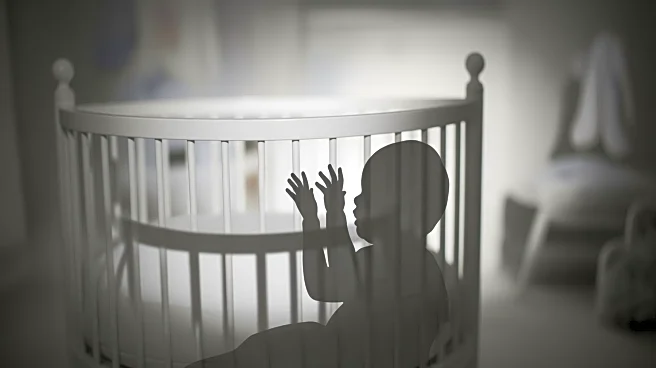What's Happening?
Jennifer Lawrence and Robert Pattinson headline Lynne Ramsay's latest film, 'Die My Love,' which explores the harsh realities of post-pregnancy life in rural Montana. The film, adapted from Ariana Harwicz's
novel, portrays the transformation of Grace and Jackson, a couple who move from New York City seeking tranquility. As new parents, they face isolation and the pressures of rural motherhood, leading to Grace's mental health decline. The narrative, while surreal and non-linear, is driven by intense performances from Lawrence and Pattinson, capturing the emotional turmoil and identity crisis associated with motherhood.
Why It's Important?
The film sheds light on the often unspoken challenges of motherhood, particularly in isolated environments. It challenges the idyllic portrayal of parenthood, offering a raw and honest depiction that resonates with many women facing similar struggles. The performances by Lawrence and Pattinson highlight the emotional depth and complexity of these experiences, potentially sparking conversations about mental health and societal expectations of mothers. This film could influence public discourse on the support systems available for new parents, especially in rural areas.
What's Next?
As 'Die My Love' gains attention, it may lead to further exploration of the themes it presents in both cinematic and social contexts. The film's reception could prompt discussions among filmmakers and audiences about the portrayal of motherhood and mental health in media. Additionally, Lawrence's performance might position her as a contender for awards, bringing more visibility to the film's themes and potentially influencing future projects that address similar issues.
Beyond the Headlines
The film's exploration of motherhood as an identity crisis touches on broader cultural and societal implications. It questions the traditional narratives surrounding parenthood and the pressures women face to conform to idealized roles. This could lead to a reevaluation of how motherhood is depicted in media and the support structures needed to address the mental health challenges associated with it.











